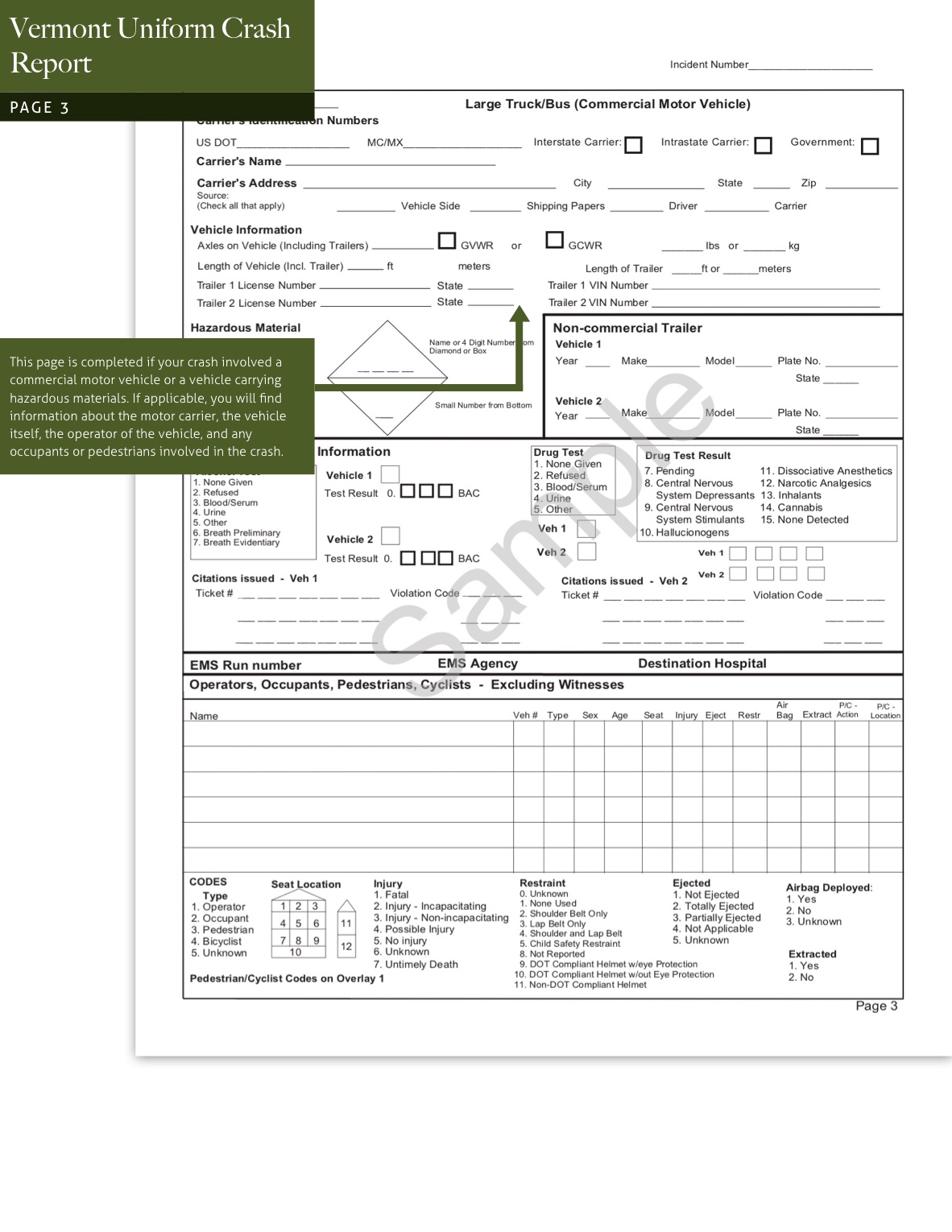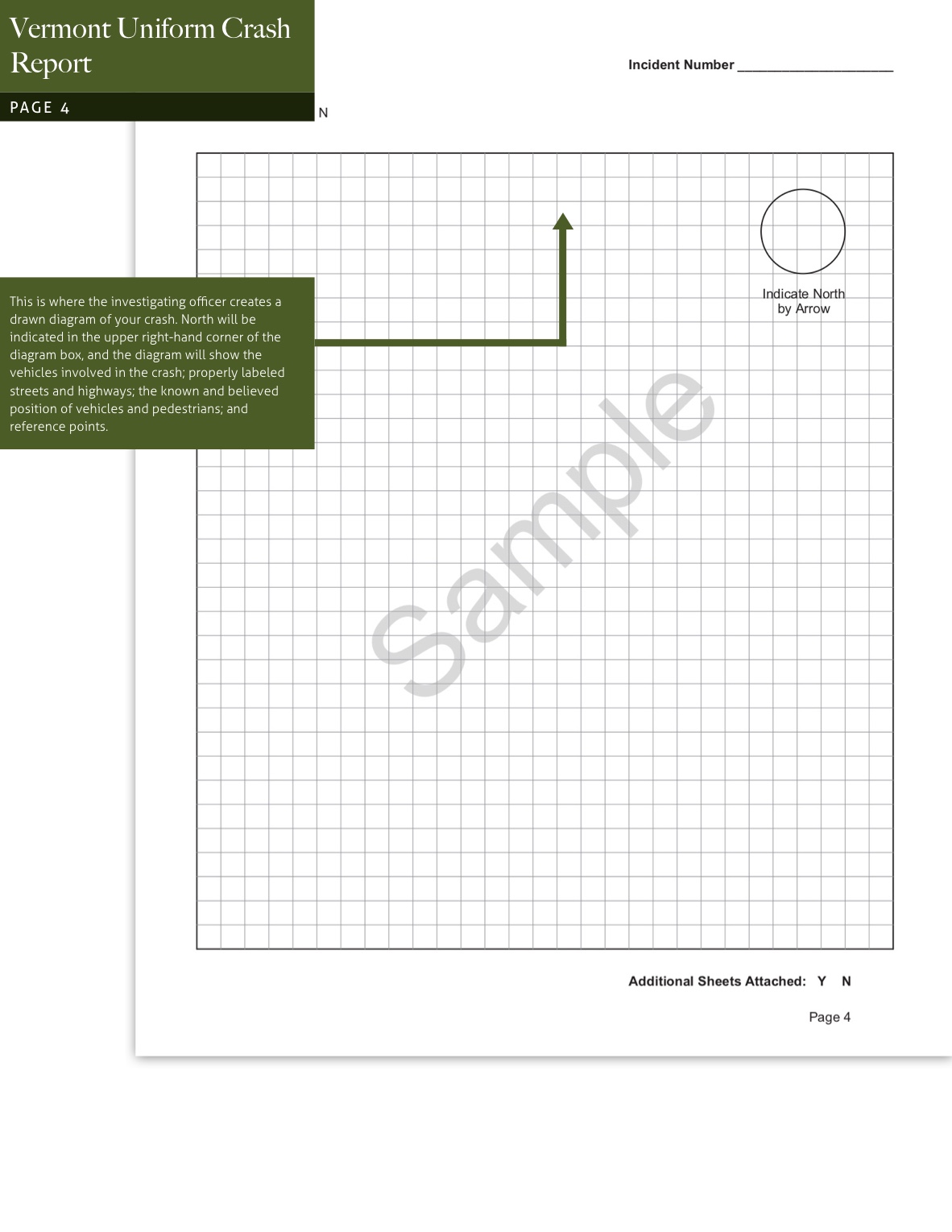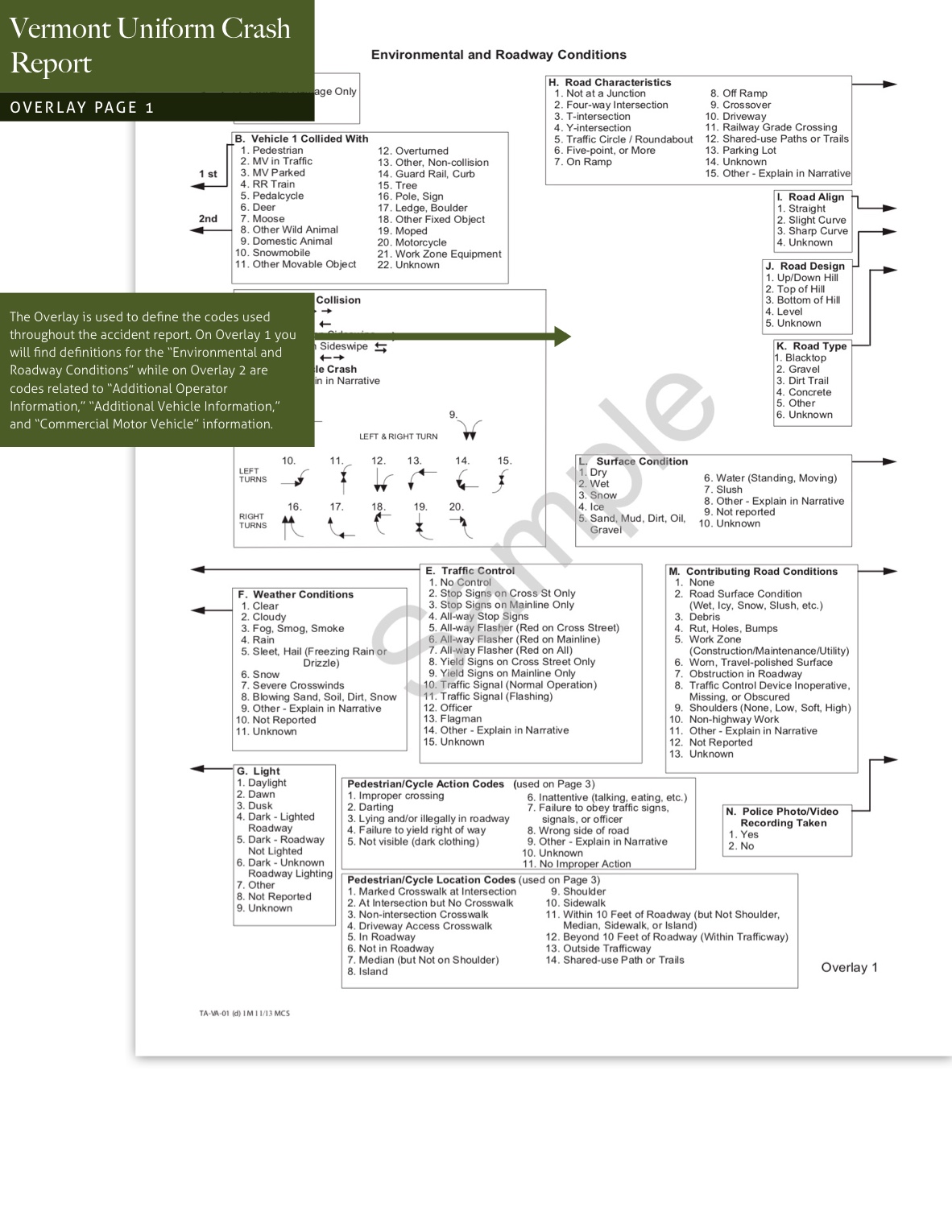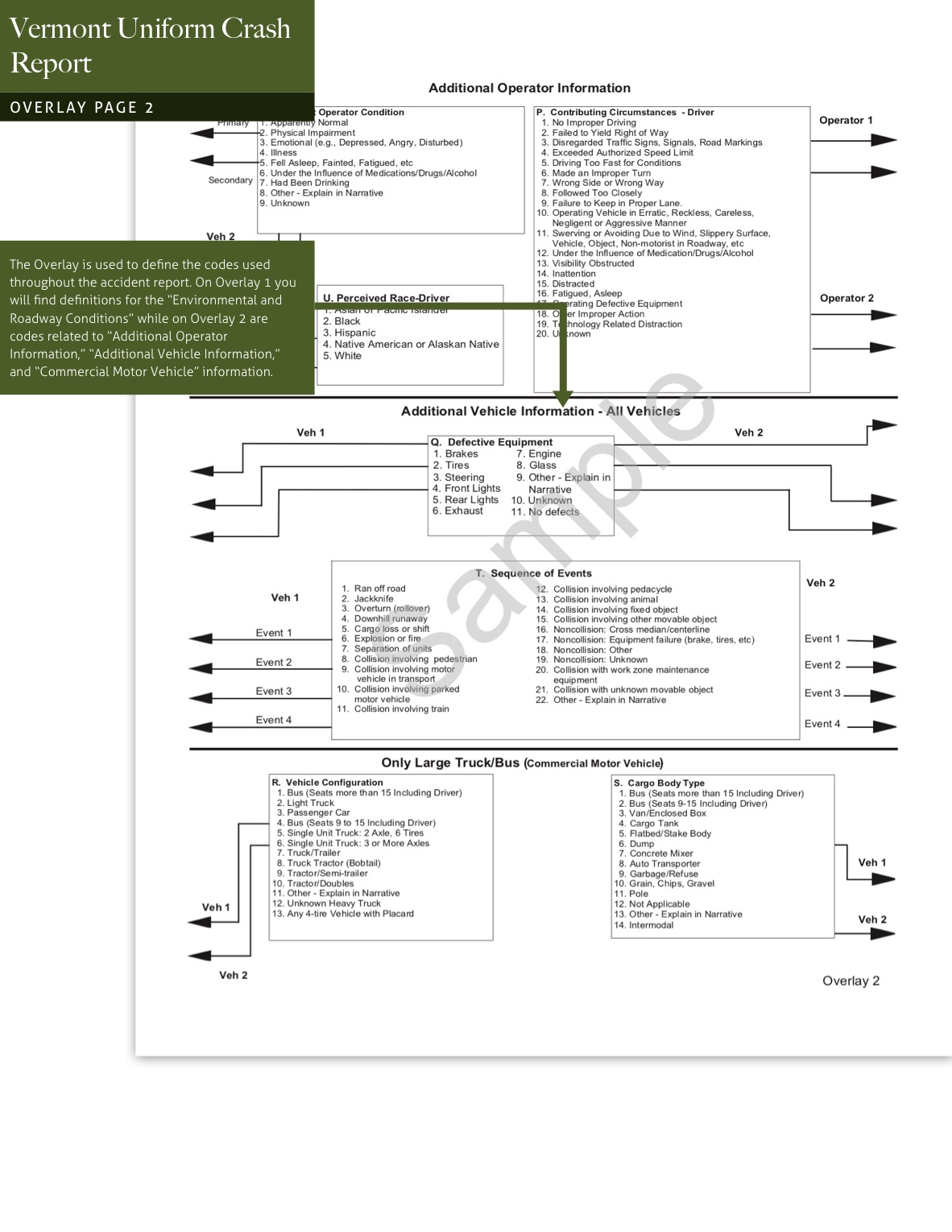In a divorce, the laws of equitable distribution distinguish marital property from separate property. Technically, only marital property, that is, proper...
In Vermont, you must immediately notify the nearest law enforcement agency of any car accident that causes property damage to an apparent extent of over $3,000 or results in someone’s injury or death. After police secure the scene and finalize their investigation of the crash, an accident report will be generated. Officially, this form is called the Vermont Uniform Crash Report, a document that includes important details about your collision and functions as a critical piece of evidence to any personal injury claim or lawsuit.
When it comes to car accidents, keep in mind that Vermont follows a modified comparative negligence system. That is, you may only recover compensation that is not attributable to your own negligence. Put differently, any compensation you are awarded through a settlement or court verdict will be reduced by the percentage of fault you’re assigned for your crash, and you can’t be more than 50% at fault to recover damages from a defendant. As such, any mistakes, oversights, or errors in your accident report could be used to shift some of the blame on to you and ultimately have a harmful effect on your legal case.
Once you obtain a copy of your crash report from the Vermont Department of Motor Vehicles, be sure to review it carefully. If you notice anything that’s incorrect in your accident report or the investigating officer’s final analysis of how your crash occurred doesn’t match up with the way you remember things happening, contact a Vermont car accident lawyer near you. An attorney can explain your legal options and help you fix any errors in your accident report to set the record straight.
Vermont Uniform Crash Report
https://www.nhtsa.gov/sites/nhtsa.dot.gov/files/documents/vt_par_printed11_2013.pdf

Page 1
Small boxes that run vertical on each side of the page contain numerical codes that provide important details about your crash. These codes are all defined on the Overlay that accompanies the accident report. The boxes are used to enter codes explaining:
A. Crash Type
O1. Apparent Condition (Operator 1 – primary selection)
O2. Apparent Condition (Operator 1 – secondary selection)
B1. Vehicle 1 Collided With (1st selection)
B2. Vehicle 1 Collided With (2nd selection)
O3. Apparent Condition (Operator 2 – primary selection)
O4. Apparent Condition (Operator 2 – secondary selection)
U1. Perceived Race (Operator 1)
U2. Perceived Race (Operator 2)
D. Direction of Collision
Q1. Defective Equipment (Vehicle 1 – 1st selection)
Q2. Defective Equipment (Vehicle 1 – 2nd selection)
Q3. Defective Equipment (Vehicle 1 – 3rd selection
E. Traffic Control
F. Weather Conditions
T1. Sequence of Events (Vehicle 1 – Event 1)
T2. Sequence of Events (Vehicle 1 – Event 2)
T3. Sequence of Events (Vehicle 1 – Event 3)
T4. Sequence of Events (Vehicle 1 – Event 4)
G. Lighting Conditions
R1. Vehicle Configuration (Commercial Motor Vehicle 1 – if applicable)
R2. Vehicle Configuration (Commercial Motor Vehicle 2 – if applicable)
H. Road Characteristics
P1. Contributing Circumstances (Operator 1 – 1st selection)
P2. Contributing Circumstances (Operator 2 – 2nd selection)
I. Road Alignment
J. Road Design
K. Road Type
P3. Contributing Circumstances (Operator 2 – 1st selection)
P4. Contributing Circumstances (Operator 2 – 2nd selection)
Q4. Defective Equipment (Vehicle 2 – 1st selection)
L. Surface Condition
Q5. Defective Equipment (Vehicle 2 – 2nd selection)
Q6. Defective Equipment (Vehicle 2 – 3rd selection)
M. Contributing Road Conditions
T5. Sequence of Events (Vehicle 2 – Event 1)
T6. Sequence of Events (Vehicle 2 – Event 2)
T7. Sequence of Events (Vehicle 2 – Event 3)
T8. Sequence of Events (Vehicle 2 – Event 4)
N. Police Photo/Video Recording Taken
S1. Cargo Body Type (Commercial Motor Vehicle 1, if applicable)
S2. Cargo Body Type (Commercial Motor Vehicle 2, if applicable)
Click here to download a printable PDF of How to Read Your Vermont Accident Report.
A unique incident number assigned to your accident, the name of the agency that responded to the crash, and the date/time of the collision can be located at the top of the report.
The exact location of your crash is documented in the upper section. Here you will find the city/town and street address of where the accident took place, and if the collision occurred on a town highway (TH#), Vermont state highway (VT#), US highway (US#), or Interstate highway (I).
The sections labeled Vehicle #1 and Vehicle #2 contain information about each vehicle’s operator, vehicle owner, and the vehicle itself. Here you will find names, contact information, insurance details, and a small diagram to show the areas of the vehicle that were damaged.
For accidents involving more than two vehicles, additional forms will accompany your crash report.
Property damage that doesn’t include the vehicles involved in the crash (e.g., utility pole, fence, tree, etc.) is described in the third section from the bottom.
The name and contact information of any witnesses can be found in the second to last section.
At the bottom of the page are the names of the investigating officer and the officer who approved the prepared accident report.

Page 2 (Crash Narrative)
The incident number located in the top right is unique to your accident report and should match the incident number found on Page 1.
On this page is where you will find the investigating officer’s written description of the collision. The crash narrative is the investigating officer’s final opinion of how and why and your accident occurred and should be based on fact. At the bottom is the investigating officer’s signature.

Page 3 (Large Truck/Bus [Commercial Motor Vehicle])
This page is completed if your crash involved a commercial motor vehicle or a vehicle carrying hazardous materials. If applicable, you will find information about the motor carrier, the vehicle itself, the operator of the vehicle, and any occupants or pedestrians involved in the crash.

Page 4
This is where the investigating officer creates a drawn diagram of your crash. North will be indicated in the upper right-hand corner of the diagram box, and the diagram will show the vehicles involved in the crash; properly labeled streets and highways; the known and believed position of vehicles and pedestrians; and reference points.


Overlay (2 pages)
The Overlay is used to define the codes used throughout the accident report. On Overlay 1 you will find definitions for the “Environmental and Roadway Conditions” while on Overlay 2 are codes related to “Additional Operator Information,” “Additional Vehicle Information,” and “Commercial Motor Vehicle” information.





